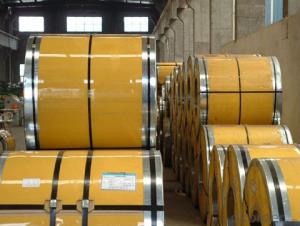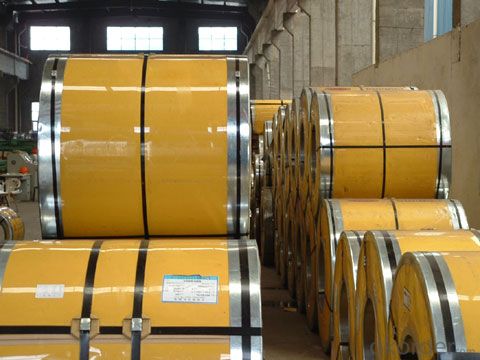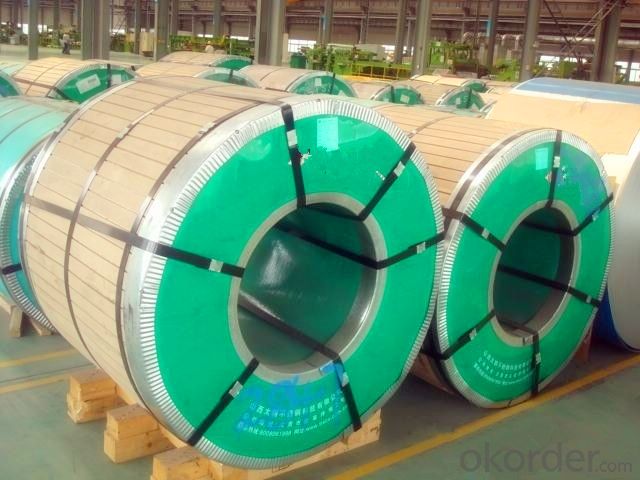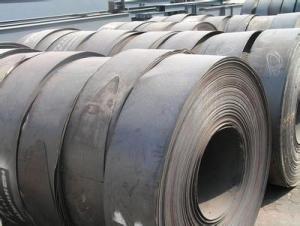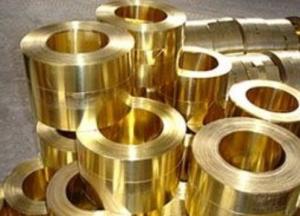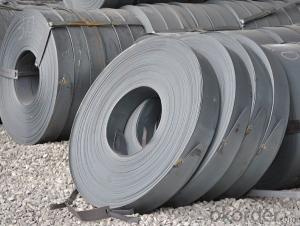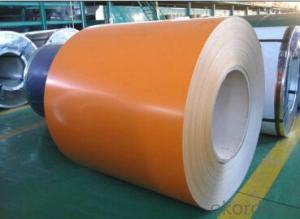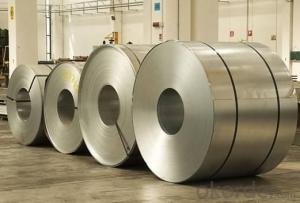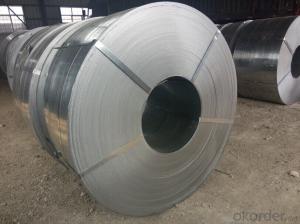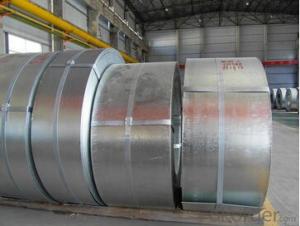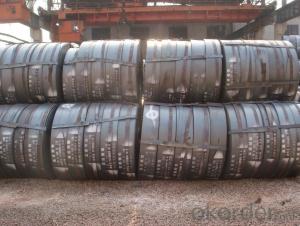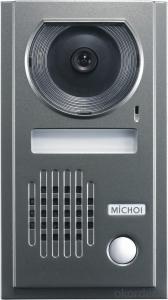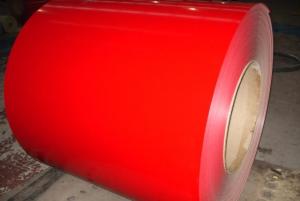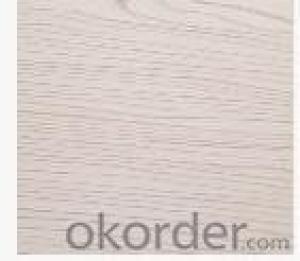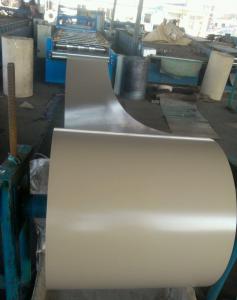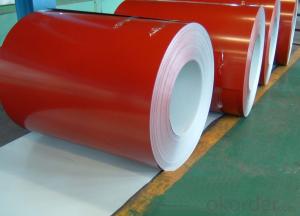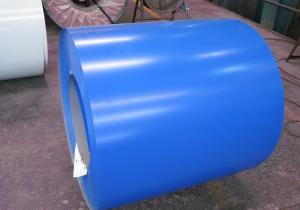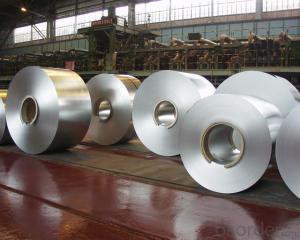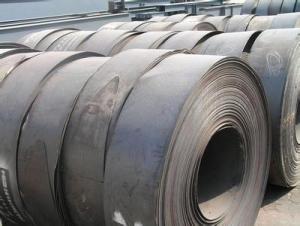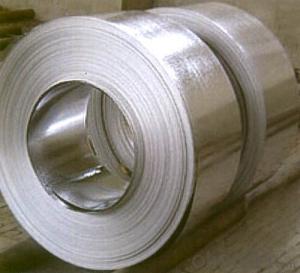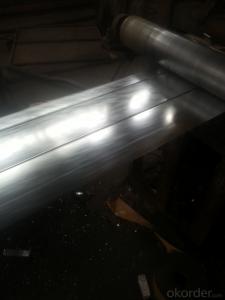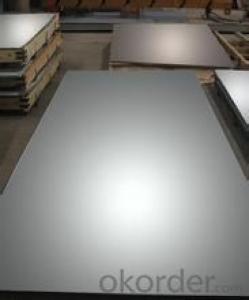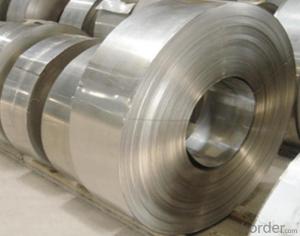PPGI/PPGL steel Coils Or Sheets With Good Quality
- Loading Port:
- Qingdao
- Payment Terms:
- TT OR LC
- Min Order Qty:
- 25 m.t.
- Supply Capability:
- 30000 m.t./month
OKorder Service Pledge
OKorder Financial Service
You Might Also Like
PPGI/PPGL steel Coils Or Sheets With Good Quality
1.Structure of PPGI/PPGL steel Coils Or Sheets With Good Quality
1PPGI/PPGL steel Coils Or Sheets With Good Quality is coated with organic layer, which provides higher anti-corrosion property and a longer lifespan than that of galvanized steel sheets.
2. The base metals for Color Coated Steel Coil consist of cold rolled, HDG electro-galvanized and hot-dip alu-zinc coated steel. The finish coats of Color Coated Steel Coil can be classified into groups as follows: polyester, silicon modified polyesters, polyvinylidene fluoride, high-durability polyester, etc.
3. The production process has evolved from one-coating-and-one-baking to double-coating-and-double-baking, and even three-coating-and-three-baking.
4. The color of the Color Coated Steel Coil has a very wide selection, like orange, cream-colored, dark sky blue, sea blue, bright red, brick red, ivory white, porcelain blue, etc.
5. The Color Coated Steel Coil can also be classified into groups by their surface textures, namely regular prepainted sheets, embossed sheets and printed sheets.
2.Main Features of PPGI/PPGL steel Coils Or Sheets With Good Quality.
1) Rust-proof
2) Water-proof
3)Durable using
3. PPGI/PPGL steel Coils Or Sheets With Good Quality Images
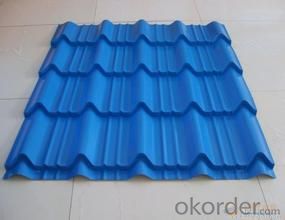
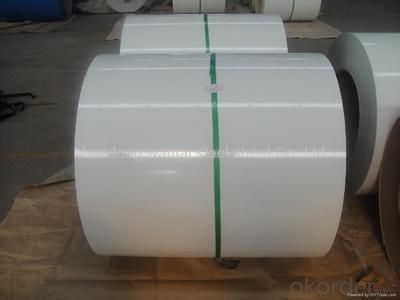
4. PPGI/PPGL steel Coils Or Sheets With Good Quality Specification
1)Based raw material: Hot rolled steel coils or Cold rolled steel coils
2) Thickness
3) Width
4)Coating mass
5) Spangle
6)Surface treatment
7)Coil inner diameter
8)Painting kind
9)Painting color
10)Painting thickness
5.FAQ of PPGI/PPGL steel Coils Or Sheets With Good Quality
We have organized several common questions for our clients,may help you sincerely:
①How about your company?
A world class manufacturer & supplier of castings forging in carbon steel and alloy steel,is one of the large-scale professional investment casting production bases in China,consisting of both casting foundry forging and machining factory. Annually more than 8000 tons Precision casting and forging parts are exported to markets in Europe,America and Japan. OEM casting and forging service available according to customer’s requirements.
②How to guarantee the quality of the products?
We have established the international advanced quality management system,every link from raw material to final product we have strict quality test;We resolutely put an end to unqualified products flowing into the market. At the same time, we will provide necessary follow-up service assurance.
③Could I have your range of the products?
prepainted galvanized steel coils/ppgi/ppgl
Product | PPGI/PPGL |
Capacity | 30,000 tons/month |
Base material | Hot dipped galvanized steel |
Thickness | 0.12-0.80mm |
Width | 600-1250mm(according to your need) |
Coil Weight | 3-6tons |
Quality | SGCC, DX51D |
Color | RAL No. or customers samples’ color |
Zinc-coating | 60g/m2-180g/m2 |
Coil ID | 508mm/610mm |
Technique | Cold rolled—hot dipped galvanized—color coated |
Painting | Top painting:15~25μm Back painting: 6~10μm |
Tolerance | Thickness: +/-0.02mm Width:+/-2mm |
Shipment time | within 15-45 workdays |
Payment | T/T, L/C at sight |
Packing | Standard export packing |
The special order can be negotiated. | |
- Q: What are the different methods for punching steel strips?
- There are several different methods for punching steel strips, depending on the specific requirements and desired outcomes. Some of the most common methods include: 1. Mechanical punching: This method involves using a mechanical press or punch press machine to create holes or shapes in the steel strip. The machine applies force to a punch and die set, which cuts through the material. Mechanical punching is suitable for high-volume production runs and provides precise and consistent results. 2. Hydraulic punching: Hydraulic punching utilizes hydraulic power to drive the punch through the steel strip. This method is often used for heavier gauge materials or when higher force is required. Hydraulic punching is known for its ability to create larger holes and shapes in the steel strip. 3. Laser cutting: Laser cutting is a non-contact method that uses a high-powered laser beam to accurately and rapidly cut through the steel strip. This method offers great flexibility in terms of shapes and sizes, and can create intricate designs with high precision. Laser cutting is often preferred when complex patterns or curves are needed. 4. Plasma cutting: Plasma cutting involves using a plasma torch to cut through the steel strip. The torch generates a high-temperature plasma arc that melts and blows away the material, creating the desired shape. Plasma cutting is commonly used for thicker steel strips and can achieve high cutting speeds. 5. Waterjet cutting: Waterjet cutting uses a high-pressure jet of water mixed with abrasive material to cut through the steel strip. This method is suitable for various materials, including steel, and is known for its ability to create precise and clean cuts without heat-affected zones. Waterjet cutting is especially useful for cutting materials that are sensitive to heat or prone to distortion. Each method has its own advantages and considerations, such as cost, speed, precision, and suitability for specific steel strip thicknesses and shapes. The choice of method will depend on the specific requirements of the project and the desired outcome.
- Q: What are the different rolling processes for steel strips?
- There are several different rolling processes that can be used for steel strips, each with its own unique characteristics and benefits. Some of the most common rolling processes for steel strips include: 1. Hot rolling: This process involves heating the steel to a high temperature and then passing it through a series of rollers to reduce its thickness. Hot rolling is typically used for producing large quantities of steel strips with a consistent thickness and a smooth surface finish. It is commonly used in the production of structural components, such as beams and plates. 2. Cold rolling: Unlike hot rolling, cold rolling involves passing the steel through a series of rollers at room temperature. This process is used to produce steel strips with a higher degree of dimensional accuracy and a better surface finish. Cold rolling is often used for producing steel strips that require tight tolerances, such as those used in the automotive and appliance industries. 3. Skin pass rolling: This process is a type of cold rolling that is used to improve the surface finish and flatness of steel strips. It involves passing the steel through a set of rollers with a small gap between them, applying a controlled amount of pressure. Skin pass rolling can reduce the thickness variations and improve the surface quality of the steel strips. 4. Tandem rolling: This is a continuous rolling process that involves passing the steel strip through a series of rolling stands in a single pass. Tandem rolling is commonly used for producing steel strips with a wide range of thicknesses and widths. It offers high productivity and efficiency, making it suitable for large-scale production. 5. Reversing rolling: In this process, the steel strip is passed through a rolling mill in both directions, forward and backward, to achieve the desired thickness reduction. Reversing rolling is often used for producing steel strips with a high degree of thickness reduction and a uniform thickness distribution. These are just a few examples of the different rolling processes for steel strips. The choice of the specific process depends on factors such as the desired properties of the steel strips, the production requirements, and the cost-effectiveness of the process.
- Q: Are steel strips resistant to staining or discoloration?
- Yes, steel strips are generally resistant to staining and discoloration due to their corrosion-resistant properties, making them suitable for various applications where aesthetics and durability are important.
- Q: Can steel strips be used in marine or offshore applications?
- Marine or offshore applications can benefit from the utilization of steel strips. Steel, being a versatile and durable material, can endure harsh environmental conditions, including exposure to saltwater and high levels of humidity. Various marine and offshore projects, such as shipbuilding, offshore platforms, pipelines, and underwater structures, can make use of steel strips. To ensure resistance to corrosion, steel strips employed in marine or offshore applications are typically crafted from corrosion-resistant alloys or coated with protective coatings. These coatings, which may consist of galvanization, epoxy coatings, or specialized marine-grade paint systems, serve to prevent rust and corrosion. By employing these protective measures, the longevity of steel strips in marine environments is extended as they can withstand the corrosive effects of saltwater. The high strength-to-weight ratio possessed by steel strips makes them a popular choice in marine and offshore applications. This characteristic is essential in constructing structures that are lightweight yet robust. Furthermore, steel is easily workable and can be fabricated into various shapes and sizes, rendering it suitable for a wide range of marine and offshore projects. In conclusion, steel strips are an economical and dependable option for marine and offshore applications. They provide durability, resistance to corrosion, and structural integrity in demanding environments.
- Q: Can steel strips be used for making industrial machinery?
- Yes, steel strips can be used for making industrial machinery. Steel strips are versatile and widely used in various industries due to their high strength, durability, and resistance to corrosion. They can be shaped and formed into different components and parts required for industrial machinery, such as frames, brackets, gears, and shafts. Additionally, steel strips can also be heat-treated and tempered to enhance their mechanical properties, making them suitable for heavy-duty applications. Overall, steel strips are a common and reliable material choice for manufacturing industrial machinery.
- Q: What are the different annealing methods for steel strips?
- There are several different annealing methods for steel strips, including full annealing, spheroidizing annealing, process annealing, and stress relieving annealing. Each method involves heating the steel strips to a specific temperature and then cooling them slowly to achieve desired properties such as improved ductility, hardness, or grain refinement.
- Q: How do steel strips contribute to fire resistance in various applications?
- Steel strips contribute to fire resistance in various applications by providing structural support and containment. They act as a barrier, preventing the spread of fire and heat transfer to other areas. Steel's high melting point and low thermal conductivity make it an excellent choice for fireproofing buildings and infrastructure. Additionally, steel strips can be used in fire-rated doors, partitions, and fireproof coatings to enhance fire resistance and protect lives and property.
- Q: Can steel strips be used in electrical or electronic applications?
- Indeed, electrical or electronic applications can incorporate steel strips. Although steel is not commonly utilized as an electrical conductor, it can serve as a structural element or for shielding in specific electrical or electronic devices. Transformers, for instance, frequently employ steel strips to uphold the shape and integrity of the apparatus. Moreover, steel strips may function as a shielding material, safeguarding delicate electronic components against electromagnetic interference. Consequently, although steel strips may not be the foremost option for electrical conductivity, they can contribute significantly in diverse electrical and electronic applications.
- Q: Are steel strips suitable for the manufacturing of furniture?
- Yes, steel strips are suitable for the manufacturing of furniture. They provide strength, durability, and versatility, making them ideal for creating various furniture pieces such as tables, chairs, and shelves. Steel strips can be easily formed and molded into different shapes, allowing for creative designs. Additionally, steel strips are resistant to wear and tear, providing long-lasting furniture that can withstand heavy usage.
- Q: Are steel strips suitable for making shelving units?
- Yes, steel strips are suitable for making shelving units. Steel is a strong and durable material that can support heavy loads, making it ideal for constructing sturdy shelving units. Additionally, steel is resistant to bending and warping, ensuring the longevity of the shelving units.
Send your message to us
PPGI/PPGL steel Coils Or Sheets With Good Quality
- Loading Port:
- Qingdao
- Payment Terms:
- TT OR LC
- Min Order Qty:
- 25 m.t.
- Supply Capability:
- 30000 m.t./month
OKorder Service Pledge
OKorder Financial Service
Similar products
Hot products
Hot Searches
Related keywords
